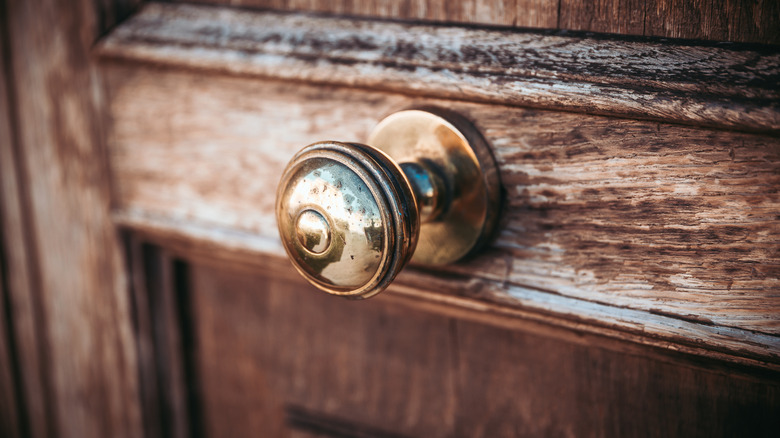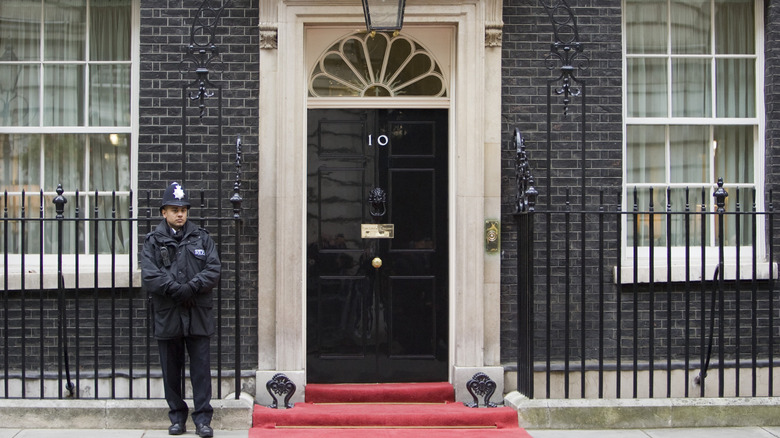Why Are Some Door Knobs Installed In The Middle Of A Door?
A door knob is a functional feature we all use, but probably don't think about much unless there's something that stands out, like those you see in historic homes made of beveled glass or intricately detailed brass. Another standout is even more rare, but very noticeable: A knob mounted smack in the middle of the door (Think the hobbit house in the "Lord of the Rings" movies, or some oversized doors in historic buildings).
While crude door handles date back to ancient times, the first documentation of a functioning doorknob as we know it (billed as a "door-holding device") was a patent filed by Osbourn Dorsey in 1878. Dorsey was 16 or 17 at the time — a possibly formerly enslaved African American young man who became an avid inventor. And while that idea illustrated the doorknob as we know it today — near the side of the door, able to latch into the door jamb — it left space for alternative ideas.
Middle placement isn't just for hobbits; it is also sprinkled around in certain parts of the world, including France and Britain. While there is a lot of online speculation as to why this design exists, the main reason swirls around aesthetics. As eye-catching as middle doorknobs can be, though, there are some things to consider if you ever think about replacing your outdated door knobs in favor of this unique look.
The idea behind middle door knobs, and why they aren't usually a first choice
While there doesn't seem to be a definitive reason or purpose for the middle doorknob, it is traditional look found more commonly on historic homes and buildings. It has been featured during various architectural periods — Victorian, Art Nouveau, and Arts and Crafts to name a few — to add class and a feeling of grandeur to the entrance. Center placement creates symmetry, drawing the eye to the entire door, and perhaps its other standout features, for a statement-making first impression.
While middle placement offers a notable focal point, it's not particularly user-friendly or functional, serving more as a passage door knob or even one type of dummy door knob. Torque is a big reason the majority of doorknobs are on the edge of doors: The farther away they are from the hinges, the less force we have to exert to open them. However, one purposeful way to mimic the central focal point idea of middle knobs is French doors or double doors; you still get the torque advantage with the hinges being on either side of each door.
If you're looking for a way to make a statement with your entryway, a middle knob could be one of the best front door design ideas. And there are plenty of hardware companies that sell them, too. Heck, if you really want to double-down on your front door aesthetics, you can even get corresponding center knobs and door knockersfor even more character.

